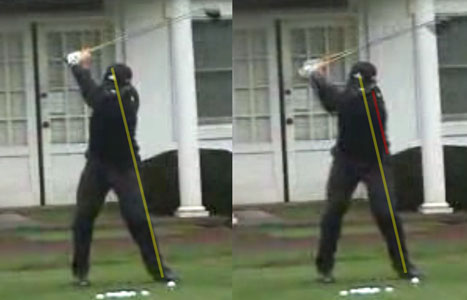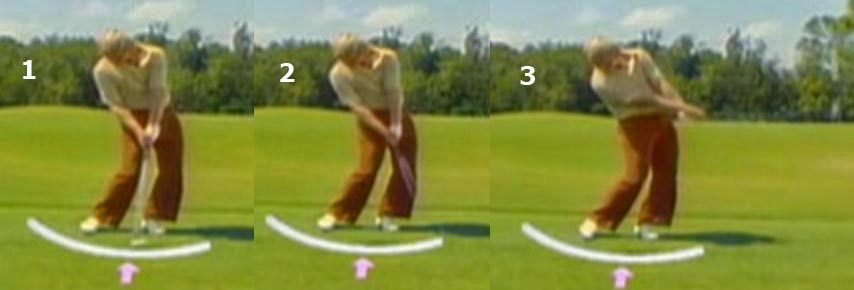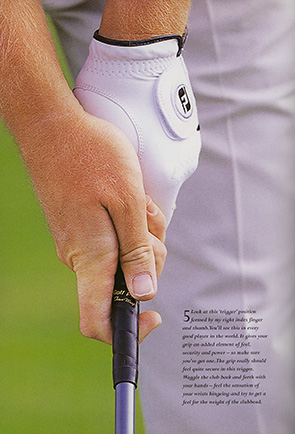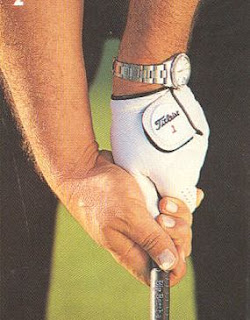
SAM SNEAD

SERGIO GARCIA

CURTIS STRANGE

JOHN DALY

BEN HOGAN

AARON BADDELEY

3JACK
Your Step Into the Foray of the Meaningless World of Golf Blogging.








 This is one of the holes that has drawn some criticism for Augusta National making the hole longer. That being said, I found this to still be a very fair test of golf. In fact, two years ago I saw quite a few pros tee off on this hole with a 3-wood and have no problem reaching the green in two. It may take out guys like Gary Player and Gay Brewer, but if Fred Funk can reach it in two without much of an issue, then it's still a reasonable length in my book.
This is one of the holes that has drawn some criticism for Augusta National making the hole longer. That being said, I found this to still be a very fair test of golf. In fact, two years ago I saw quite a few pros tee off on this hole with a 3-wood and have no problem reaching the green in two. It may take out guys like Gary Player and Gay Brewer, but if Fred Funk can reach it in two without much of an issue, then it's still a reasonable length in my book.Par 4
495 Yards
Original Intent:"A tee shot played to the right which does not avail itself of the slope will add at least two club numbers to the length of the second shot, in addition to which the approach to the green must be made across the slopes, rather than directly into them. A good drive down the left side usually makes it possible to play the second with a medium iron, sometimes even less if the wind be behind."- Bobby Jones, in Sports Illustrated, April 6, 1959
Significant Changes:
- Green relocated from fairway bottom to current location, 1937
- Tee moved back 5-10 yards and moved five yards to the golfer's left, 2002
Did It Work?
Historically the most difficult hole on the course, the long par-4 requires two solid shots. Moving the green turned a relatively tame hole into a monster.
Average
History Score: 4.32
Average History Rank: 1st
credit: http://www.augusta.com/
The front page of Golf Magazine features: Build a SWING you can TRUST by Masters Champion Trevor Immelman.And here's a pic of what Immelman says to do at impact:
HOW TO BUILD TRUST IN YOUR TOP POSITON:
Point the toe down and cup your left wrist.
HOW TO BUILD TRUST IN YOUR IMPACT:
TRUST THIS: My toe-down position at the top means
I have to really go after it at the bottom. This may sound like a compensation move, but it's actually the easiest way to square the face and swing with speed. I like to feel the clubhead passing may hands through impact, not may hands trying to hold the face square.












.gif)











Par 4
460 Yards
Original Intent:"Under normal playing conditions a long drive straight down the middle of the fairway will give the best result, since the ball will reach a reasonably flat area and provide an open shot for at least half the green. The hole opens up more and more as the drive is played to the right, but the distance becomes increasingly longer."- Bobby Jones, in Sports Illustrated, April 6, 1959
Significant Changes:
- Green altered; right slope softened to make pin placement less severe, 2007
- Tee moved back 25-30 yards, 2002
Did It Work?
This hole still plays true to what Jones envisioned. The approach, if not properly judged, will spin off the false front and leave the golfer with an awkward chip.
History Average Score: 4.15
History Average Rank: 11th
credit: http://www.augusta.com/

Par 5
570 Yards
Original Intent:"(The green) is completely visible for the third shot and a player who is sufficiently long to get up in two will be able to define the position of the green owing to the size of the surrounding hillock."- Alister Mackenzie, from the first Masters program
SIGNIFICANT CHANGES
- Tee moved back 15-20 yards and shifted 10 yards to golfer's right, 2002
- Fairway bunker reshaped and nearly doubled in size, 2002
Did It Work?
Like No. 2, this hole is still easily reached in two shots. The enlarged fairway bunker punishes wayward drives, but birdie is still expected here by the players.
History Scoring Average: 4.85
History Average Rank: 15th




Lately, I've grown really tired of many golf forums because the threads about golf swings and golf theories usually turn into long, worn out flame wars.
Unfortunately, I think Bonar exemplifies part of the problem.
I think a lot of the problems with discussing the golf swing is that most golfers usually come from poor instruction early on in their lives. Then the golf magazines just compound the problem. Eventually the golfer gets some better instruction, but the teacher is teaching one particular pattern. Usually, it doesn't work for that golfer. Eventually the golfer gets some different instruction and finds a way to swing the club that works for them.
After that, the golfer thinks that because a certain method worked for them...it will automatically work for everybody. And to make matters worse, they believe that there are a lot of absolute imperatives to the golf swing that all golfers MUST do in order to hit the ball effectively.
Thus, you get a lot of golfers with a lot of different methods about how to hit the ball effectively and the flame wars begin.
And yes, I've been guilty of this crap as well.
The truth is that there are very, very few absolute imperatives to the golf swing. Flat lead wrist at impact and effective pivot are probably the biggest two 'must have' parts of the golf swing. But other than that, there's tons and tons of ways to grip and swing the club and still be a darn good ballstriker.
Bonar falls into the trap. He believes that this is THE secret to golf and that everybody else has neglected to tell golfers that. And what's really bad is that he doesn't really instruct the method very well nor does he seem to know much about it.
Thus, the hatred and criticism begins and there's little in the way of good, meaningful discussion of the golf swing.
3JACK

450 yards
Par 4
Original Intent:"Length is certainly not at a premium here, but the narrow fairway seems to have an added impact because it suddenly confronts the player just when he has become accustomed to the broad expanses of the preceding holes. ... The second shot is normally a steep pitch, often with a wedge, and precise judgment of range is required."- Bobby Jones, in Sports Illustrated, April 6, 1959
Significant Changes:
- Six feet added to left side of green to allow more pin placements, 2007.
- Left-rear bunker moved back several feet, 2007
- Tee moved back 35-40 yards, 2006- Trees added to both sides of fairway, 2006
- Green rebuilt for possible right, rear pin position, 2006
History Average Score: 4.14
History Average Rank: 12th
credit: http://www.augusta.com/

 This is a beautiful hole that does not get much attention. It drops off more than it looks.
This is a beautiful hole that does not get much attention. It drops off more than it looks.Original Intent: "With the ball stopping either short of this raised area (back plateau) or off to the left of it, it is an extremely difficult job to get the first putt close to the hole."- Bobby Jones, in Sports Illustrated, April 6, 1959
Significant Change:
- Pond filled in at front of green, 1959
Did It Work?
The cosmetic change has had no real effect for tournament play. Putting the tee shot on the proper side of the green is crucial.
History Average Score: 3.14
History Average Rank:
13th
credit: http://www.augusta.com/


Original Intent:"The proper line here is, as closely as possible, past the bunker on the left side of the fairway. It is not necessary to carry this bunker in order to direct the drive into a groove in the fairway on top of the hill. But it is a very comforting safety factor to have sufficient length for the carry should the shot be pulled slightly."- Bobby Jones, in Sports Illustrated, April 6, 1959
Significant Changes:
- Fairway bunkers extended about 80 yards toward the green, 2003
- Tee moved back, 2003
Did It Work?
Yes. Players rarely try to carry the bunkers anymore, so they are forced to play to the right, which means a longer shot to a difficult green.
Average History Score: 4.27
Average History Rank: 5th
credit: http://www.augusta.com/